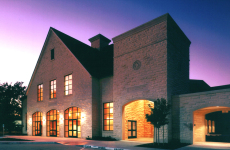A growing number of parents in East Dallas have become fed up with what they view as an inefficient and unresponsive Dallas ISD. Their frustrations range from a perceived over-emphasis on student test results to the inability of parent volunteers to effect changes in school administration, as highlighted by the story about how a prominent Dallas city official pulled her child from a local public school after numerous parent-led improvement efforts failed to receive additional support from school and ISD personnel. Rather than tackling systemic problems endemic to the Dallas ISD at large, these parents have devised their own plan: pool resources to create a separate school district.
The White Rock ISD that dissatisfied parents are proposing would include schools in the Lakewood and, naturally, White Rock neighborhoods, areas which constitute Dallas ISD’s wealthiest tax base, according to the Dallas Morning News’ education blog. As a result, if the White Rock ISD were to actually materialize, Dallas ISD would be confronted with a significant decline in available funds. Dallas ISD superintendent Mike Miles claims that “the model that makes the most sense…is for [the existing school district] to improve the entire system” and to prevent schools from splintering off into smaller districts, yet this hasn’t stopped the initiative from attracting new supporters, as evinced by its growing popularity on Facebook.
The movement is still trying to determine how White Rock and Dallas ISDs would share resources, and as can be expected, it has yet to gain traction among the ranks of Dallas ISD officials. Still, perhaps the greatest hurdle to forming a new district would come not from school district administrators, but from district denizens themselves. According to the aforementioned Dallas Morning News education blog,
To create a new district within an existing one, Texas law requires the new one to have at least 8,000 students in an area greater than nine square miles. And there are two paths to get it approved. The Dallas ISD trustees could approve a resolution, or supporters could petition Dallas County commissioners. If either standard is met, the proposal would go to a vote. It requires a majority. And at least 25 percent of registered voters in both the new and remaining districts must cast ballots. In last May’s Dallas ISD school board elections, only 5.6 percent of registered voters cast ballots.
It would appear that dissatisfaction with the Dallas ISD has become increasingly widespread and increasingly vocal. Over the next few weeks, it will certainly be interesting to see how this grassroots campaign will be able to mobilize and garner support from parents and ISD administrators alike. Perhaps even more intriguing, though, will be to watch if and how this effort will become more socio-economically diverse and branch out beyond the ranks of middle-class families who constitute the majority of the proposed White Rock ISD and who, according to the second article hyperlinked above, have been the most vocal in advocating for changes within the schools themselves.

























